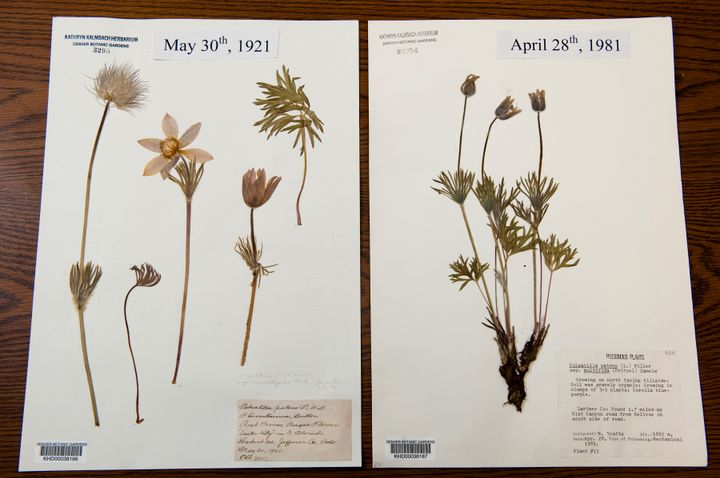
The herbarium specimen on the left was collected in May, 1921, whereas a specimen of the same species was found flowering a month earlier in 1981.
According to the calendar and the corresponding position of the earth in relation to the sun, it is now officially spring. But spring arrived weeks ago, according to many flowers, when warm temperatures typically associated with mid to late April arrived in early March. In fact, “spring” as defined by bloom time, is actually arriving as much as month earlier now than it was100 years ago. Indeed, in a paper published by the American Journal of Botany, scientists, looking at preserved plant specimens, have determined that many rare species of flowers are responding to warming temperatures and changing seasonal rainfall patterns by blooming two to four weeks earlier then they did historically. This was the first study to focus specifically on imperiled flowers. Previous research in Boston and the Mid-West had also found patterns of earlier bloom time in many species, but, typically found shifts of only one to two weeks.
This earlier flowering time is problematic because the final date of frost in the Rocky Mountain region has not correspondingly changed, meaning that many plants will flower only to have the blooms killed by frost. There are also risks that the plants pollinators will not find them open at the right time. Both of these problems mean that early flowering plants won’t reproduce. Those plants that grow in the mountains, like those in the Colorado study, are expected to grow at higher and higher altitudes as well, with the risk of being “squeezed off the tops” of mountains as they run out of habitat.
In a study published this month it was found that warming temperatures were also triggering advanced blooming of grasses, sampled from across multiple eco-regions of the United States. For those of us who are allergic to wind-dispersed pollen, such as those of grasses, this means earlier onset of symptoms.
Since these plants have entire communities of animals and other organisms associated with them, we are only beginning to understand the ecological consequences of earlier blooming times. Warming temperatures associated with climate change are having a myriad of biological impacts, with earlier flowering times representing only the tip of the proverbial (melting) iceberg.